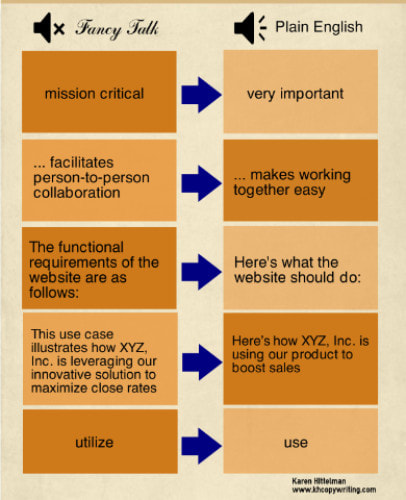updated
Believe it or not, copy written about technology CAN be easy to read and understand. Here's the key: Use words people know, and kick the geek-speak and marketing mumbo-jumbo to the curb (notice I didn't say, "Laymanize the manuscript").
Of course, the main thing is to know your audience. If you're writing a brochure to promote all the killer iPhone games your company has created, and you'll be handing it out at YodaCon2017: The Mobile App Design and Development Expo, feel free to mention objective-c and XCode; talk about your adherence to scrum methodology; or explain how your engineers use plists to make your games more data driven and flexible. Otherwise, stick to plain English.
How many times have you read the homepage of a company's website and come away without understanding what, exactly, it is they do? Cloud computing companies come to mind, but it happens all the time, in every industry imaginable. Often, the problem stems from a desire to come across as a smarty pants ... I mean ... a thought leader. But heavy use of industry jargon and highfalutin language isn't smart; it's distracting.
Of course, the main thing is to know your audience. If you're writing a brochure to promote all the killer iPhone games your company has created, and you'll be handing it out at YodaCon2017: The Mobile App Design and Development Expo, feel free to mention objective-c and XCode; talk about your adherence to scrum methodology; or explain how your engineers use plists to make your games more data driven and flexible. Otherwise, stick to plain English.
How many times have you read the homepage of a company's website and come away without understanding what, exactly, it is they do? Cloud computing companies come to mind, but it happens all the time, in every industry imaginable. Often, the problem stems from a desire to come across as a smarty pants ... I mean ... a thought leader. But heavy use of industry jargon and highfalutin language isn't smart; it's distracting.



 RSS Feed
RSS Feed